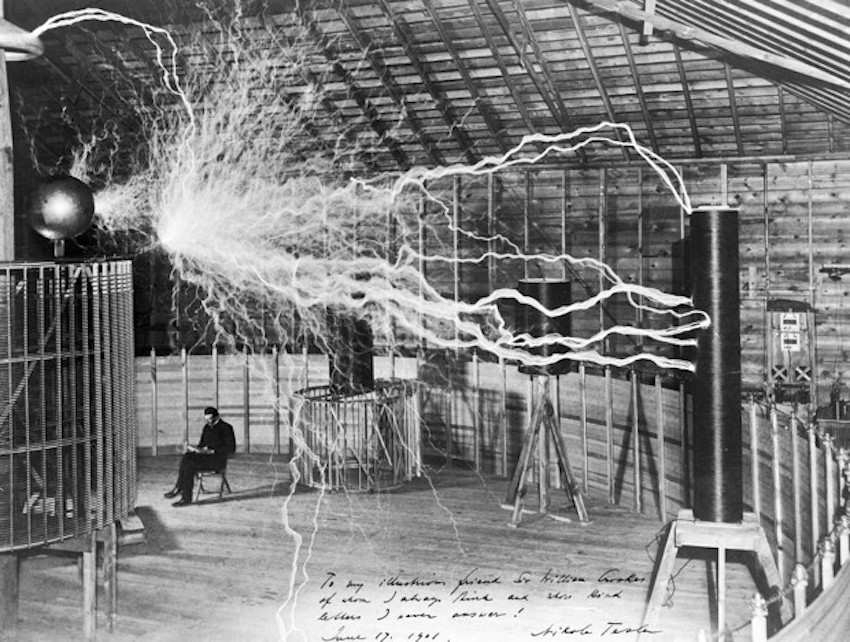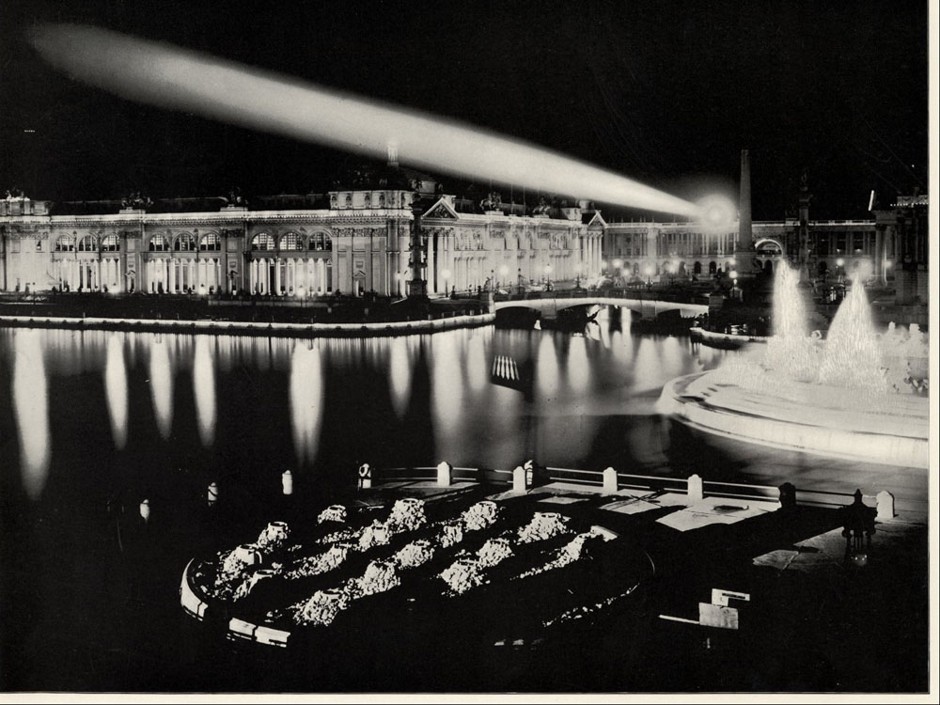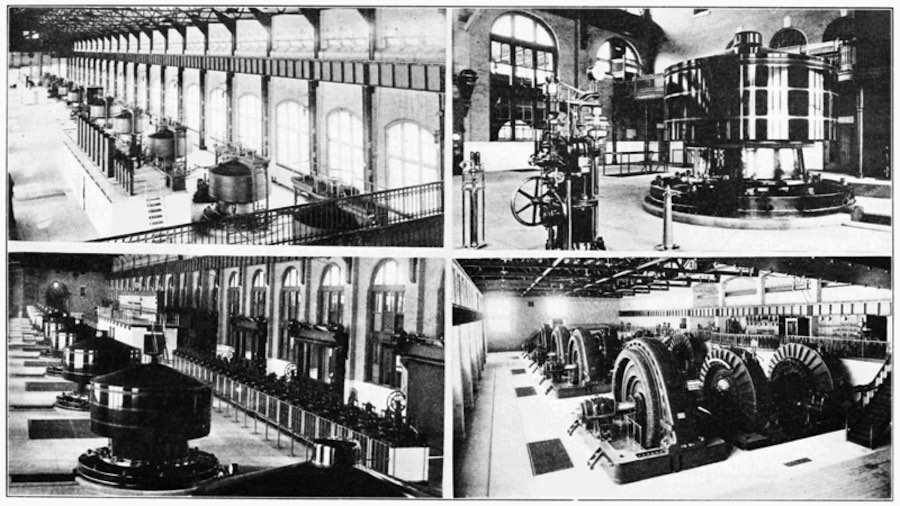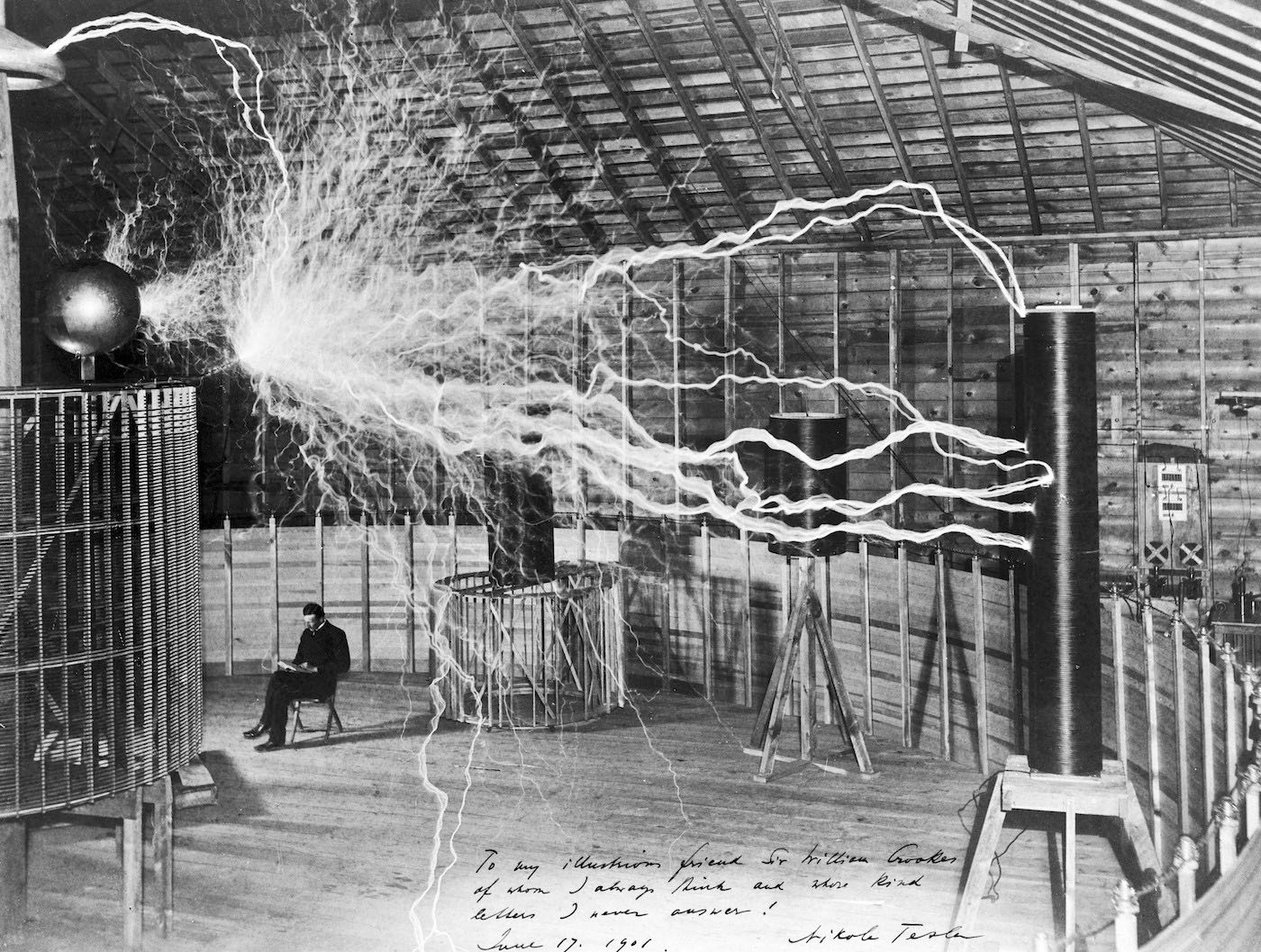You might know about Tesla vs. Edison. In cities, it was Edison vs. Westinghouse.

The story of electric power is a story of urbanization. The major battlefield of the famed “War of Currents”—an electric arms-race and propagandized power struggle between Thomas Edison, Nikola Tesla, and George Westinghouse—was Manhattan. But to set the scene, let’s start in Paris, the City of Light.
In 1878, Edison attended the Exposition Universelle, where arc lights powered by electric generators lined the Avenue de l’Opera and the Place de l’Opera. A year later, he unveiled his improvements on the incandescent light bulb. By 1882 he started the Edison Electric Light Company to distribute his low voltage direct current (DC) power to homes—and due to demand from city governments, to the streets as well.
After working for the Continental Edison Company in Paris, the inventor Nikola Tesla emigrated to the United States in 1884. Tesla worked at Edison Machine Works on Manhattan’s Lower East Side, fixing generators and developing an arc lighting system that would have brought Edison’s incandescent lighting to the streets (the project was abandoned due to the limitations of DC power). After six months, Tesla left Edison’s hire, and his unceremonious departure gave way to the wildly popular story/meme that pits creative genius against capitalist boss.
From our partners:
Soon after, George Westinghouse, a Pittsburgh-based entrepreneur and engineer who invented the railway airbrake, scooped up Tesla and his patents improving on a newer alternating current (AC) power system—which steps up voltage using a transformer to help power cross greater distances, then steps it down for safer consumption.
By 1887, a “war” of sorts between AC and DC takes place—in city newspapers and streets. “Just as certain as death,” Edison predicted in private, “Westinghouse will kill a customer within 6 months after he puts in a system of any size.” Edison soon sees to it, suggesting alternating current as the best means for death by electric chair. Meanwhile, Westinghouse is racing into cities previously lit by Edison to put up his power stations.
With that epic battle for the control of the grid in mind, CityLab spoke with Jill Jonnes, the author of the 2004 book Empires of Light: Edison, Tesla, Westinghouse, and the Race to Electrify the World to discuss how the arrival of electricity transformed cities.
What sparked the idea for Edison to bring electricity into cities when he started his Electric Illuminating Company in 1880?
Electricity was already in cities in a crude form, known as arc lighting. It was very intense and it really couldn’t be used safely except really large spaces, either outdoors or in really large interior spaces. No one had been able to crack the problem of creating some sort of long-lasting incandescent bulb.
Once Edison did that, he had to invent an entire system of delivery—direct current—to use the bulbs inside houses. He did that in New York City, powered by Pearl Street Station in 1882.

The distinguishing aspect of direct current was that you really couldn’t economically send electricity much more than about a mile. If you had a power station, you would need another one a mile or two away in order to send power out concentrically from that. In the Edison world of electricity, you would have a power station every couple of miles—these were all coal fired plants.
You can imagine people weren’t all that enthused about that. The other important thing about direct current was it could operate motors, and that was important for businesses.
The advantage of alternating current was that you could send it out [across] long distances. If you already had an alternating current-generating plant, you could start by electrifying an existing part of a town and expand. This is late 19th-century America—the country’s urbanizing rapidly, there’s a lot of immigration, it’s really a booming time—you could supply more electricity, not by having to put in new generating plants, but by extending the wires.
The big problem with AC originally was that no one had figured out how to make it operate motors. That was Tesla’s great contribution. Then he became a direct threat to Edison’s system because [Edison] didn’t have that advantage anymore.
What did take to physically create electricity infrastructure?

You were looking at a pretty big central station that would be burning coal. Edison sold a lot of individual units, office buildings, hotels, manufacturing companies, and businesses. It was a lot like the generators we use today when we do don’t want to face a power failure.
Getting on the grid was not simple: You had to wait for the grid to get to you. It was expensive and more of a luxury at first. The first residential house to be electrified was J.P. Morgan’s. You had to have your own lighting engineer.
What went into selling these systems to cities as a utility?
Salespeople from these companies would go pitch the city council. Once a city was committed to that, they were pretty much locked into it.
You can see the problem that Edison quickly started to face [once he built infrastructure for direct current]. The Pearl Street Station went into operation in 1882. By 1888, Westinghouse—only three years into his own operation—had caught up. That October, for example, Westinghouse had sold central power for about 45,000 lights in New York City while Edison had sold 44,000 lights [that year]. The obvious superiority of running lines through AC rather than DC had caught up to Edison.
“Getting on the grid was not simple: You had to wait for the grid to get to you.”
That’s why, in 1890, we see one of these battles over electric current: the electric chair. Edison, who had always been against capital punishment, decided to promote and actively make happen the first use of electric chair in the state of New York because he wanted to use Westinghouse alternating current generators to persuade people that this was deadly—not something you wanted to have in your house.
Did people panic about the idea of electricity in homes?
There are newspaper accounts in your book about a people getting electrocuted by stray wires in 1888 and 1889. It would seem like that would scare people out of the idea, but it didn’t.

Those were arc lighting wires. Edison made a big thing about it, but that didn’t last long. People embraced electricity as a superior technology pretty immediately.
By and large, electric lighting was replacing gas light. Gas lighting really was dangerous. If you turned blew out the flame in the gas without turning off the gas, you would asphyxiate in the course of the evening. People were very aware of the perils of gas as a form of indoor lighting.
Once electricity came into people’s worlds, I think they thought it was quite benign. For one thing, it was no longer a live flame, which in itself seems much safer. Again, it was a bit of a luxury. By 1907, only 8 percent of Americans lived in homes served by electricity nationwide. It was not dispersed super swiftly because the infrastructure had to be built. Once that was in place, the question was whether you could you afford it. For every new technology, people have to be persuaded that it’s important. I think the thing that made them really want electricity was the radio, which didn’t become ubiquitous until the 1920s and ‘30s.
How did electricity change the way people lived in cities?
Electricity makes it more possible for cities to become much livelier—people could be out and about in a way that just wasn’t true if you were living in rural America. Cities became much more nocturnal places than the countryside: This entire world of nightlife was possible. The streets were lit. The interiors of buildings were lit.
For the majority of people who worked during the day, the fact that things could be lit up at night meant you had this whole additional period of leisure that you otherwise really wouldn’t have.
Electricity also meant you could have elevators and thus much taller buildings, and the density of cities begins to change. Also, there’s electricity powering subways, trolley cars, and these much more efficient forms of mass transit.

What can the War of Currents teach us about the role of economic power in cities during the Gilded Age?
Edison invented this idea of the marriage of science and corporate capital. He needed money and he needed investors and he wooed them by bringing people out to Menlo Park and showing people what he was doing. He persuaded J.P. Morgan, one of the great capital investors of the time, and a variety of people around Morgan to capitalize Edison Electric Light Company at $300,000. He invented that way of underwriting a big complicated technology company.
He also got a huge block of stock, and would sell stock when he needed money. Eventually, the consequence of that was that he was no longer the majority owner of his company. At a certain point, J.P. Morgan noticed.
“For people who worked during the day, the fact that things could be lit up at night meant you had this whole additional period of leisure that you otherwise really wouldn’t have.”
Edison was wedded to his system of direct current. He believed that this was safer and therefore better, even though technologically it was clearly inferior. His own sales people were constantly begging him to take up alternating current. There was another electric company known as Thomson-Houston and they had also acquired alternating current patents and technology.
At a certain point, Morgan looked at both of these two companies and realized that Thomson-Houston was growing faster and was delivering more profits than Edison Electric Company. He now controlled Edison because he had the majority of stocks. Without saying anything to Edison, he merged the two companies, put the head of Thomson-Houston in charge of it, and renamed it General Electric.

The Tesla vs. Edison fight has become a very popular meme, but what is Westinghouse’s role in this race to electrify cities?
Edison really operated as if he were a solo inventor; he was only really interested in things that he himself had invented. What made Westinghouse different was that he was interested in the broader field. If he saw some technology that had commercial prospects, he was very happy to buy the patent and then hire as a consultant whoever that inventor was and then bring that back to Pittsburgh, where he had teams of engineers and others to commercialize that technology.
Nikola Tesla, who was a genius inventor, only saw one of his inventions, the AC motor, become commercially meaningful—by collaborating with Westinghouse. Tesla invented all kinds things that were ahead of his time, but without Westinghouse he never did anything with them.
Westinghouse was also very progressive. At a time when Carnegie and Frick are calling out the Pinkertons and some of their workers are dying because they are ill-used by their employers, Westinghouse is pioneering the half-Saturday off, pensions, and paying for the education of his employees. He represents a sort of better, gentler capitalism while still being a major competitor.

The big evidence of Westinghouse’s success in this format war is the Chicago World Fair in 1893, and later his hydroelectric power installed in Niagara Falls.
There was a big battle over who would get that contract between General Electric and Westinghouse. By that point, GE also had AC. In the end, Westinghouse got it, and was also able to underbid. It also had to do with politics. People liked Westinghouse; he was very charming.
The point of the White City and the Chicago World Fair of 1893 was to incorporate electricity into everything, so that people could see with their own eyes how their lives were going to change and how the world was going to look. Until then, electricity was kind of invisible, so it seemed mysterious and was something most people had never seen. Around 92 million people went to the fair. There were things like electric fountains that danced and had colored lights. There was a moving walkway, the kind you see in airports today, which no one had ever seen before. There was an electric kitchen; no one had ever seen that. They’d describe these things as such pie-in-the-sky. The goal was that everything would be powered by electricity, and they succeeded. It all worked very seamlessly and was kind of invisible. And it meant the fair could be open at night.

Soon after the Fair, Westinghouse won the contract to build the Niagara Power Plant because he had the Tesla patents. It was huge example of hydropower, transmitting power 26 miles to the city of Buffalo. It demonstrated that you could harness the incredible wealth of hydropower—which costs you nothing and is clean—and send it long distances. By 1902, Niagara Falls was providing a fifth of all the electricity in the United States.
As people are moving to cities, the quality of their lives is going up and a lot of that is powered by electricity. Because cities had this early monopoly, they became engines of growth.
This feature originally appeared in Citylab.

















